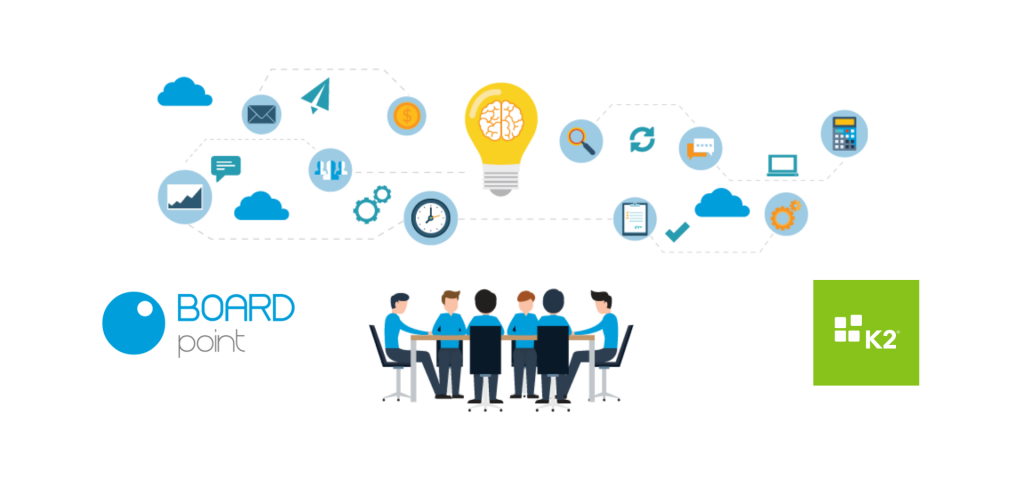eVision, the daughter company of IT Sistemi, is the first host of The K2 Intelligent Automation European Tour event
The K2 Intelligent Automation European Tour event organized by K2, UiPath and eVision has begun its journey in Zagreb. The tour will visit several European destinations, and judging by the response at the first location, interest in robotic and digital process automation is more than great.
Although many wonder if robots will replace humans, the answer is simple – robots will take repetitive jobs from humans and give people more free time and opportunities to do creative jobs. How to achieve it, where to start and what challenges await us along the way were the main topics of this event.
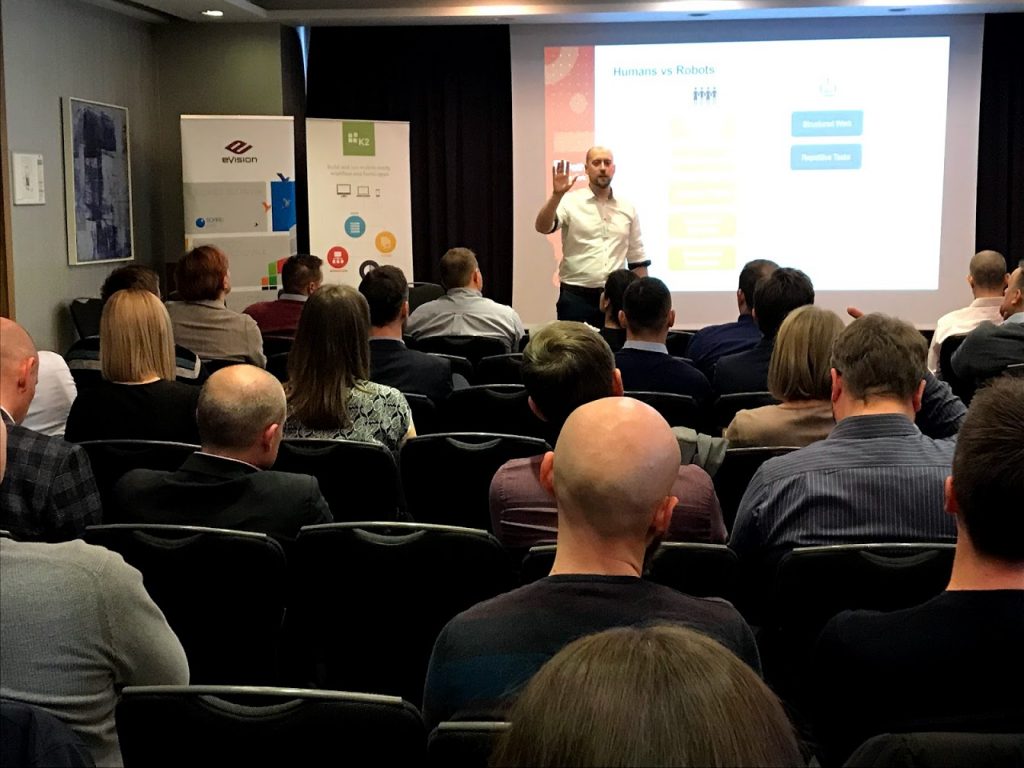
Basic pillars of intelligent automation
Individual technology is used across multiple processes and across multiple departments, and the challenge is how to connect them and create a scalable, sustainable, process-oriented system within the organization.
The story of intelligent automation in response to these challenges was started by Zvonimir Mavretić CEO eVision, explaining what its core pillars are and where it lies on the digital transformation adoption curve.
3 pillars of intelligent automation:
- Digital Process Automation (DPA) – converting manual or paper processes into digital applications that require well-designed and informative user interfaces and continuous availability.
- Robotic Process Automation (RPA) – performing repetitive tasks that people would normally have to do.
- Artificial Intelligence (AI) – a broad term for technology that uses data to “think” similar to humans, finding meaning in large amounts of data.
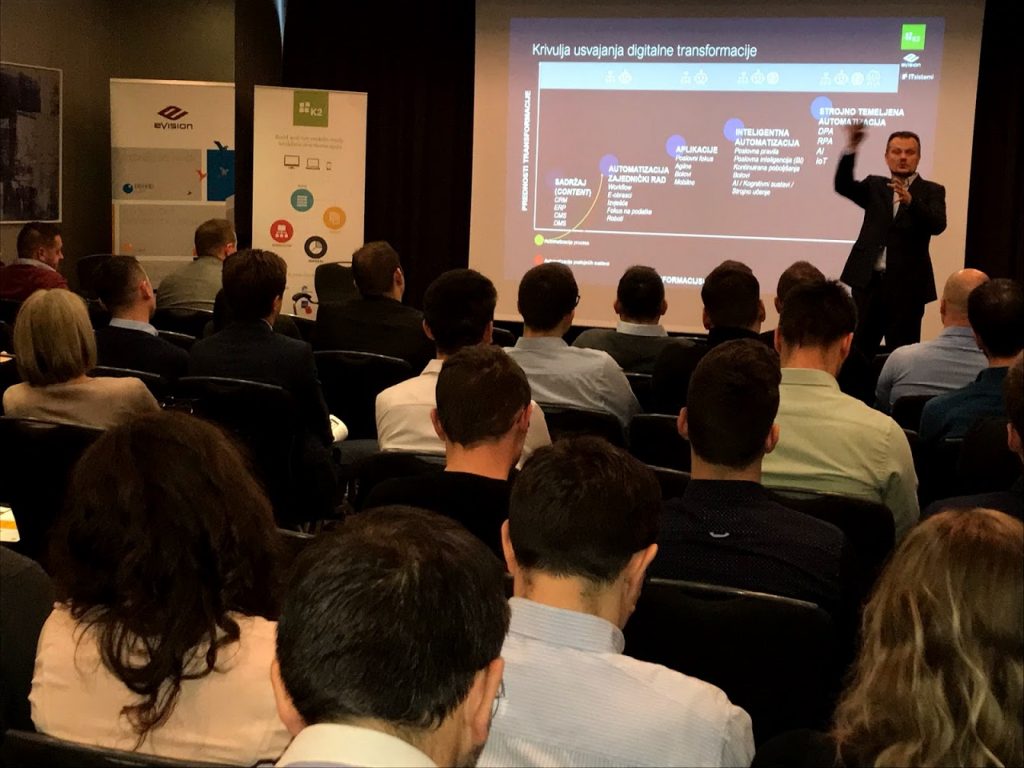
IA initial guidelines
Once the content is arranged, it tends to as easy as possible to manage and interact with it. When that part of digitization is over, we turn to business-focused applications. Only then do we come to intelligent automation and ultimately machine-based automation.
Dealing the question of where to start from with intelligent automation at all, Zvonimir advises: “Be bold in creating your organization’s strategy, making sure that its approach to implementation is agile and choosing the right technologies for the right purposes. Just because a technology is popular does not mean that it is the best solution for you. In addition, you need to invest in your people and encourage them to innovate, as well as invest in platforms that allow for change with little or no programming.”
Ease of use and user experience
Graham Penman – K2 Europe Senior Manager & Technical Sales was in charge of demonstrating the capabilities of the K2 BPM platform and UiPath’s RPA technology. As one of the main features of today’s technology he points out the ease of use, which is associated with the term of citizen developer – a person with little technical knowledge to manage technology. But has technology really become so simple: “There are different applications, the range of their complexity is wide, of course the most complex things will always be done by experts, but some everyday tasks can be left to those with less technical knowledge. It is especially helpful to include them in the application development process because those who typically develop them are not users of those applications,” explains Graham, emphasizing the importance of user experience.
And when it comes to the success of software robots, he reminds us that we have to give them time to learn: “AI machine learning can be compared to a child, it has to be developed and learned. The Google Translate algorithm is a great example – it initially had a lot of room for improvement, but the more people corrected and learned it, the better and better it became. Today, thanks to the vast amounts of data it has received over the years, it works really well. And this is something that people forget, AI doesn’t have the knowledge at the beginning, it’s a long-term process where the more quality data a robot gets, the better and faster it will learn and be more useful.”
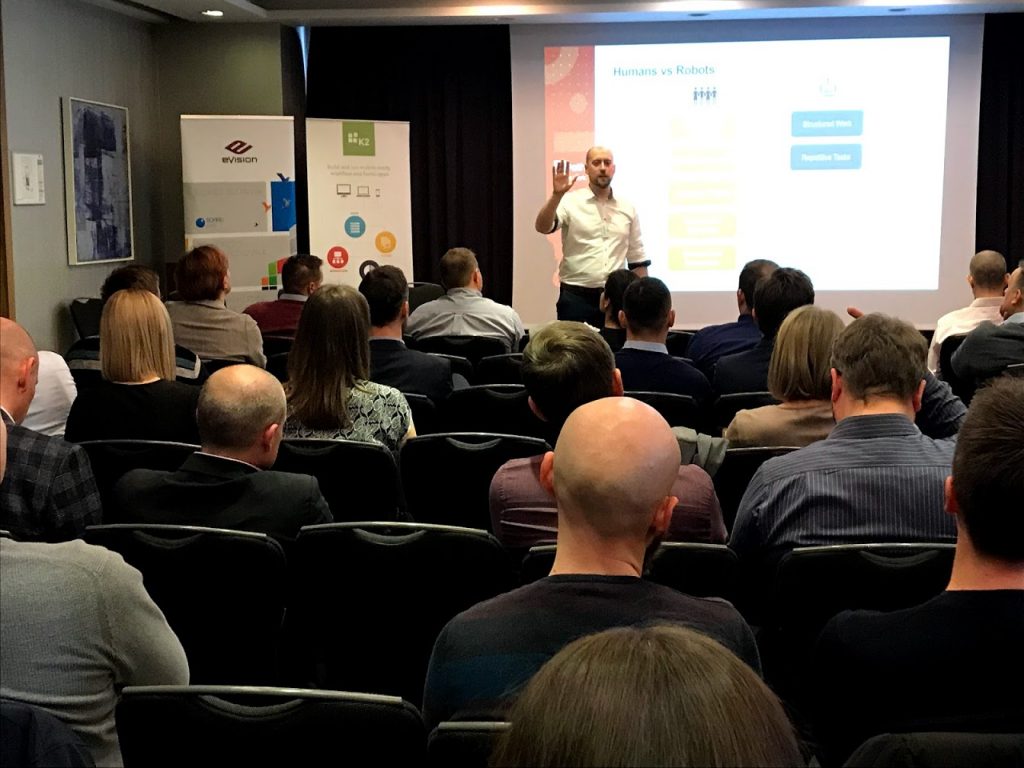
What can software robots do?
RPA robots are capable of mimicking many human actions as a user. They log into applications, move files and folders, copy and paste data, fill out forms, extract structured and semi-structured data from documents, and more. Basically, every recurring process based on specific business rules is eligible for automation.
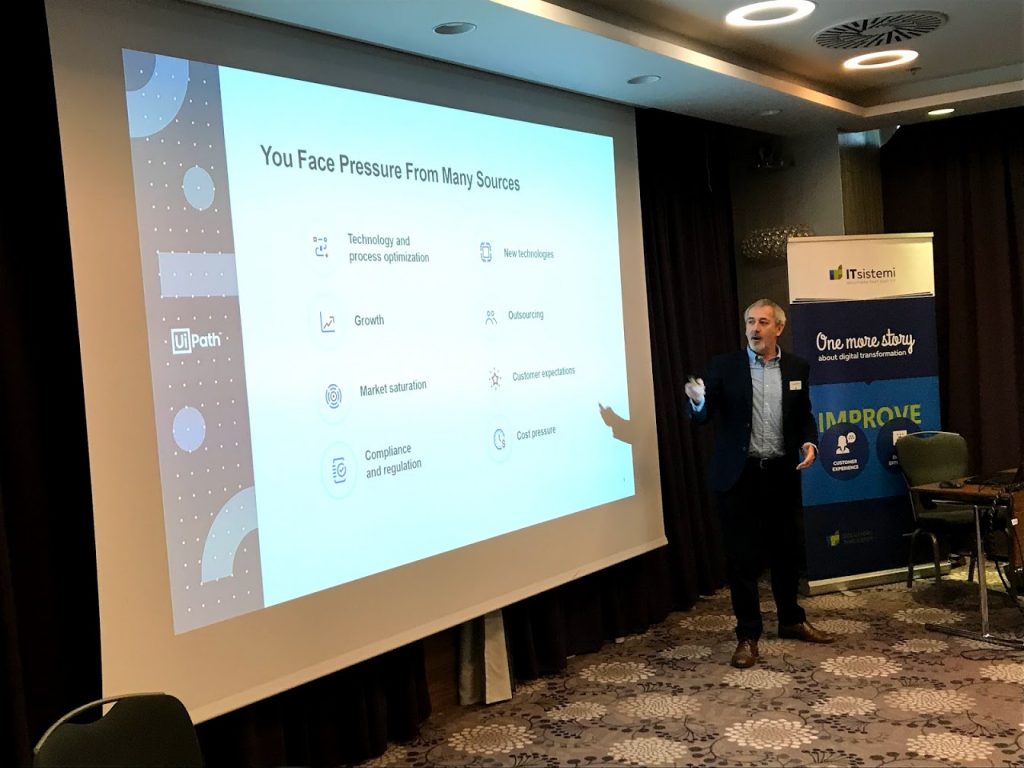
Application possibilities ranging from finance, procurement, IT and human resources to customer support were introduced by Paul Blackwell – K2 Regional Manager Europe, explaining global trends in the use of RPA and DPA technology: “RPA is a relatively new technology, in this form has been present for only about 3 years, and already over 90% of organizations accept such technologies. I believe that figure will be 100% soon as everyone knows that replacing repetitive jobs with software robots makes sense. This will free up people to have more time for the things they really want to do. We all hope to have some more free time in the future.”
Local businesses are just beginning to discover the benefits of DPA technology
DPA, the precursor to Business Process Management (BPM), is a technology that is often used by local businesses, but more to solve a particular business problem, and implementations are often done by outsourcers. DPA is not yet recognized as a platform for solving a large number of business issues through appropriate applications on the DPA platform. Zvonimir Mavretić explains the main reason so: “From our experience, domestic companies rarely have and/or develop expertise in implementing DPA solutions. Most often, they try to overcome existing business problems by developing or purchasing new specific solutions, and rarely use DPA. There are certainly examples, such as Podravka, which has a dedicated business process implementation team with excellent expertise for the last 10+ years, which has resulted in the internal implementation of a large number of BPM/DPA applications.”
Most banks accepted the RPA
The situation with RPA is almost the opposite of the situation with DPA, the technology is new, it appeared a few years ago, but companies have immediately recognized their capabilities, especially in the banking sector. Most banks in Croatia have RPA teams dedicated to them, working on internal implementations. “The possible reason for this situation is that RPA solutions are most commonly applied to business problems that do not affect a large part of the organization and do not look for changes to existing applications. RPA allows for very simple and fast integration to complete tasks as a user. Even here business benefits can be calculated and realized very quickly. On the other hand, DPA solutions can often extend across the entire organization, which involves more people and potential integration with multiple existing systems (ERP, CRM, HR…). This complicates implementation and requires greater effort across the organization, but with it the benefits for the entire organization can be much greater than RPP solutions,” explains Zvonimir.

Graham Penman

Paul Blackwell

IMG_0339

IMG_0323

The K2 Intelligent Automation European Tour

IMG_0313

IMG_0269

IMG_0262

IMG_0239

IMG_0217

IMG_0179

IMG_0182

IMG_0187

IMG_0191

IMG_0196

IMG_0198

IMG_0202

IMG_0205

IMG_0211

IMG_0174

IMG_0135

IMG_0096

IMG_0093

IMG_0083

IMG_0077

demo

IMG_0227

loptice



